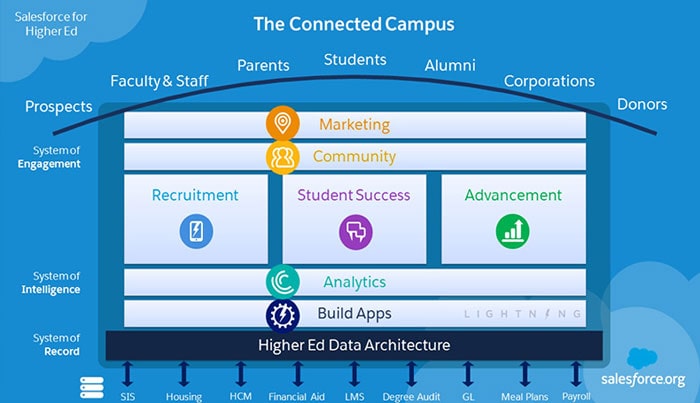In this second part of a 2 part Blog Series – Simplus Solution Architect Matt McKeown gives an overview of the trends in CRM adoption in Higher Education in Australia – and compares this to what’s happening globally.
Higher education is going through massive changes around the world as it responds to societal demands.
The changing work environment is changing the way we learn; people now retrain every five to ten years. The careers that my 10-year-old son could move into in 10 years do not yet exist; we don’t know what they will be.
Lifelong learning is changing the way that universities address their market. It’s no longer good enough to be transactional, to have a student come in, do a three-year course and then, off they go, perhaps with an entry into an alumni database to engage them at some point later on.
Now, universities and their students are on an ongoing journey, where they are returning to the university again and again.
Universities have to engage students with new and exciting opportunities, little tasters and teasers, a short course which may move later into a degree. And a CRM will be the tool to enables this engagement.
We’re seeing CRM models that are much more complex than the old business-to-business data model, although you can still do the same kinds of things and draw the links between all of the various relationships.
In universities, the relationships can be very complex.
There are prospects, faculties, parents, students, corporations, and donors – with all kinds of linkages going on. Some of the students are also employees, students might be linked to two or three faculties and to various departments; perhaps they’re in the debating club, they’ve joined the gym, they’re in a social society.
Consumers are now expecting organisations, including universities, to have a model that captures all of those various linkages and acts on that information where appropriate.
The lifetime student base of the university will expect the university to know them the way that their bank knows them, the way that Qantas knows them. It should not be an issue to complete your education at an online connected campus partly in the physical space as well as an online space.
Around the world, more than 800 universities and colleges are implementing Salesforce with the Higher Education Data Architecture (HEDA) model for just this purpose.
Some are in Australia but most are overseas. UCLA, and the University of Colorado, and Georgetown University are just three of them.
HEDA lets the university deploy capabilities where the customers are. Social media plug-ins will alert you about what people are saying about you on social media, responding to complaints and enquiries promptly. Digital forms let people input their own data into your database; personalised portals keep students logging in, especially when services like intern job boards are added on. Then prospects who become students and then alumni and perhaps students again are fully engaged and you can hold them all the way through that learning journey.
At the back of HEDA is a Salesforce environment using everything that we’ve learned about CRM and all of the different ways that we need to interact, business-to-consumer, business-to-business and university to student community.
As with any CRM, implementation gives you visibility for the whole team.
Everyone can see who’s been talking to a prospect or a student and what they’ve received so far.
The HEDA CRM gives universities the capability to meet the growing expectations of customers, moving menial tasks out of people’s daily working lives so they can focus on the stuff that’s more valuable. Academic data can be captured and shared, partnerships can be modified or improved and that gives universities new opportunities to grow the way that they do business.





